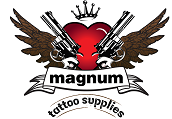Things you should know about Tattoo Anaesthetics
 Most people get addicted to getting tattoos because of the pain they feel during the tattoo process. Others want to get a tattoo to overcome emotional pain and divert it to physical pain. But not everyone wants to get a tattoo and feel the needle penetrate their skin. Some even doubt themselves whether they can handle the pain or not. Fortunately, tattoo product manufacturers have come up with a solution to cater to those who are dying to get a tattoo but have low pain tolerance. There are tattoo anaesthetic sprays, numbing creams, and anaesthetic gels available on the market. Tattoo artists have been using these anaesthetics for a long time.
Most people get addicted to getting tattoos because of the pain they feel during the tattoo process. Others want to get a tattoo to overcome emotional pain and divert it to physical pain. But not everyone wants to get a tattoo and feel the needle penetrate their skin. Some even doubt themselves whether they can handle the pain or not. Fortunately, tattoo product manufacturers have come up with a solution to cater to those who are dying to get a tattoo but have low pain tolerance. There are tattoo anaesthetic sprays, numbing creams, and anaesthetic gels available on the market. Tattoo artists have been using these anaesthetics for a long time.
There have been a lot of questions and speculations about these tattoo anaesthetics. And we would like to answer some of those questions for you and for others who are scared to get a tattoo because of their low tolerance to pain.
- Do tattoo anaesthetics really work? Yes, of course! These products can be very effective. However, not all anaesthetics are created equally. If you own a tattoo shop, and you want to offer tattoo anaesthetics to your client, be sure to look for the following ingredients when buying tattoo anaesthetics: lidocaine, tetracine, benzocaine, and/or epinephrine. Menthol, camphor, tea tree oil, and comphrey roots are some of the natural additives that help enhance the power of the anaesthetics.
-
How do they work? Lidocaine, one of the numbing agents mentioned earlier, can be found in nearly every tattoo anaesthetic product. The higher the percentage of lidocaine, the more effective it will be. It deadens the nerve endings and makes the tattooing process more comfortable for both the artist and the customer. Also, lidocaine is a key ingredient in reducing the initial stings of a tattoo needle when it hits the skin. It prevents the client from flinching too much. There are also products that contain tetracine or benzocaine, if not both. These are nerve blockers.
They do not totally put a stop to nerves from sending pain signals to the brain, but they lessen the level of discomfort that those pain signals can give. There's also, epinephrine, a vasoconstrictor that causes the blood vessels to narrow. This narrowing means there is less bleeding and swelling during the tattooing process. However, be careful as too much of these anaesthetics can cause complications.
- What is the most effective combination of tattoo anaesthetics? Some tattoo anaesthetics take effect faster than others, which makes them perfect as boosters to apply as secondary layers throughout the whole tattooing process. When you are using a tattoo anaesthetic that contains epinephrine, it won't be necessary to reapply it, one layer is enough. Also, try to use tattoo anaesthetics like Tattoo Soothe Cream or Hush anaesthetic gel. During the preparation of the skin for the tattooing process, wash client’s skin with products like H2Ocean’s Nothing Pain-Relieving Foam Soap enhanced with Bactine. The Bactine will help in reinforcing the effects of any topical anaesthetic applied beforehand.
- Matthew Nelson






